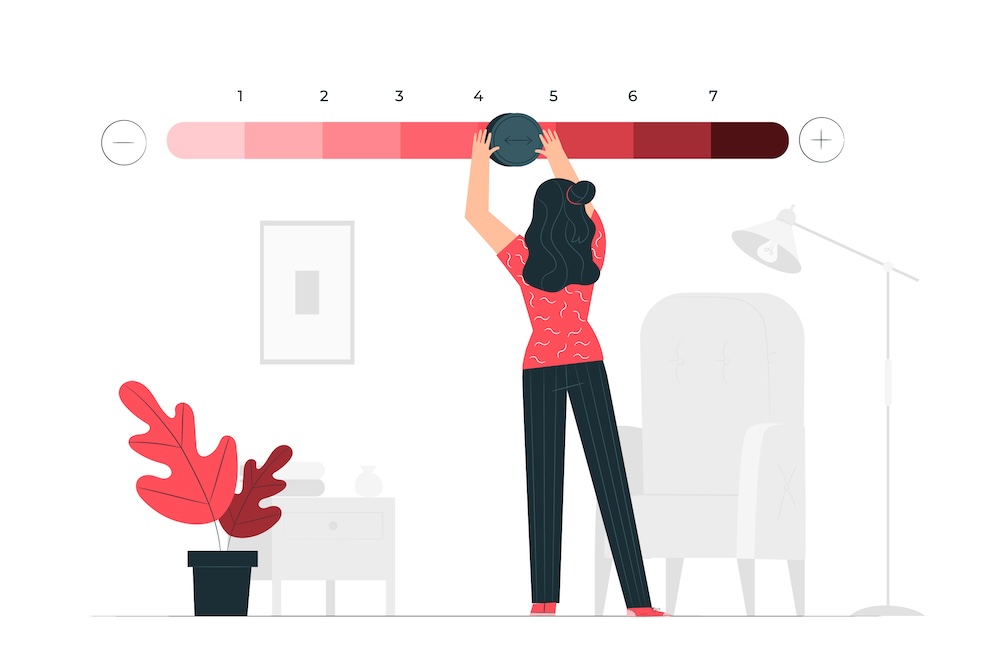
The Importance of Understanding Customer Satisfaction
If you’re part of a modern sales team, there are a few things you’re probably intimately familiar with. How annoying it is when your reps forget to send a follow-up? Check. Trying to comb through lead lists and tidy up garbage information? Check. But is there anything quite as frustrating as trying to track customer satisfaction and not having a single clue where to begin?
Okay, okay, you’ve got us. It’s definitely not the most irritating part of the job. But it’s still an inconvenience, especially when you consider just how vital customer satisfaction is when it comes to maintaining a competitive edge. These days, you have to be a jack of all trades—if you slip up in one area, your competitors will come chomping at the bit to steal your customers. So you really can’t afford any mistakes.
How are you supposed to understand customer satisfaction, you ask? That’s where we come in.
Net Promoter Score (NPS)
The Net Promoter Score, or NPS, is a fantastic way of getting insight into how your customers perceive your brand and their likelihood of recommending your products or services to others. By including it in your array of KPIs to track and improve upon, you stand a fantastic chance of growing your brand loyalty with your customers over time and reaping the rewards when it comes to bottom-line revenue growth.
So we can confidently say that at its most basic, the NPS is a metric used to measure loyalty and satisfaction, and involves asking your customers a single question: “On a scale of 0 to 10, how likely are you to recommend our product/service to a friend or colleague?”

Based on their responses, customers are categorized into three groups:
Promoters (9-10)
Loyal enthusiasts who will keep buying and refer others, fueling growth for your organization in the long run
Passives (7-8)
Satisfied but unenthusiastic customers who are vulnerable to competitive offerings and need to be nurtured carefully in order to avoid churn
Detractors (0-6)
Unhappy customers who can damage your brand through negative word-of-mouth and should be coaxed back into perceiving your brand positively as soon as possible
To calculate the NPS, you subtract the percentage of Detractors from the percentage of Promoters, giving you a score that ranges anywhere from -100 to 100.
The Benefits of Using NPS
Implementing NPS as part of your wider sales performance tracking strategy offers several advantages:
Simplicity
It’s straightforward for customers to understand and respond to the single-question survey
Actionable Insights: By identifying customer segments and their loyalty levels, you can easily prioritize areas for improvement
Benchmarking
The NPS offers a standard metric to compare performance over time and against competitors that you can focus on improving in a structured way
Customer-Centric Strategy
It encourages a focus on customer satisfaction and loyalty as key business drivers, which will have knock-on effects when it comes to long-term sales growth
Integrating Your CRM with Typeform for NPS Surveys
The best way to get started with NPS tracking is by integrating your CRM with Typeform. For the purposes of this article, we’ll be using our own software, noCRM, as the case study. After all, noCRM offers a no-code integration with Typeform, ensuring that all customer feedback is collected, analyzed, and acted upon within a single, centralized system.
Setting Up Typeform for NPS Surveys
Typeform is a versatile tool that enables you to create engaging and user-friendly surveys. To set up an NPS survey, follow a few simple steps:
Create a Typeform Account
Sign up for an account if you don’t have one already, of course.
Design Your Survey
Use Typeform’s interface to create a new survey, based around the NPS question, which we’ll repeat again here for your convenience: “On a scale of 0 to 10, how likely are you to recommend our product/service to a friend or colleague?”
Additional Questions
If you like, feel free to add follow-up questions to gather more detailed feedback on the reasons behind their score.
Customization
Customize the survey’s look and feel to match your brand and reduce any potential friction with your customers.
Analyzing and Acting on NPS Data
Once you’ve got your Typeform survey set up, it’s easy to integrate it with noCRM and start gathering the kinds of responses you need to calculate your overall NPS score with your existing customers.
But what are you supposed to do once the information starts flooding in?
Don’t fear! This is where the fun starts. Collecting NPS data is just the beginning—it’s in the analysis and action stage that the real business improvements will be driven.
Data Aggregation
Use noCRM’s tags feature to aggregate and analyze NPS responses.
Identify Trends
Look for trends and patterns in the feedback to identify common themes and areas for improvement, and make notes for how you’re going to enact those changes going forward.
Close the Loop
Respond to Detractors promptly to address their concerns and try to convert Passives into Promoters through targeted follow-ups and engagement strategies.
Practical Tips for Maximizing NPS Survey Effectiveness

The ultimate goal of gathering NPS data is to drive continuous improvement in your products, services, and customer experience. Ideally, you’ll be regularly reviewing and adjusting your strategies based on the feedback received to ensure you are meeting and exceeding customer expectations. In order to do that, of course, you need the best possible data. To that end, here are a few practical tips for maximizing the effectiveness of your NPS survey.
1. Timing is Key
The timing of your NPS survey can significantly impact response rates and the quality of feedback. Consider sending surveys at key touchpoints in the customer journey, such as:
- After a purchase or transaction
- Following a customer service interaction
- Post-product usage, giving customers enough time to form an opinion
2. Personalize Your Communication
Personalization can increase response rates and make customers feel valued. Use noCRM’s wealth of business data to personalize your survey invitations and follow-up communications.
Whenever possible, remember to address customers by their names and reference their specific interactions with your company.
3. Keep It Simple
While it’s tempting to gather as much information as possible, keeping your NPS survey concise will actually encourage higher completion rates.
Focus on the core NPS question and, if they’re absolutely necessary, keep any follow-up questions to a bare minimum in order not to distract from the main focus of the task.
4. Incentivize Participation
Offering incentives such as discounts, gift cards, or entry into a prize draw can motivate customers to participate in your NPS survey. It might seem like a silly expenditure, but trust us—once you’ve got the improvements from your enhanced NPS performance showing in your bottom-line sales growth, you’ll be glad you went to the effort.
As always, ensure that the incentive is relevant and appealing to your target audience.
5. Communicate the Value
Never forget to let your customers know that their feedback is valuable and will be used to improve their experience. Clearly communicate how their responses will make a difference, and thank them for their participation, being as transparent as you can throughout the entire process.
These days, everybody’s used to being blasted with feedback forms everywhere they go online. Don’t risk being just another irritating face in a massive, noisy crowd.
6. Act on Feedback
One of the most important aspects of NPS surveys is acting on the feedback received. Show your customers that you value their input by making tangible improvements based on their suggestions and addressing any issues raised.
The best way to do this is with the participation of other team members and departments, who can help to implement changes across the board. Once your customer sees you’re actually listening to them and you care about their concerns, they’ll be that much more loyal to you going forward—and that’ll make all the difference in the long-term.
Even though customer satisfaction is at the heart of all things sales, it’s not always easy to work out just how loyal or happy your customers are in terms of pure numbers. That’s where the Net Promoter Score comes in. But if simply figuring out what an NPS score actually is can seem stressful, calculating it can seem like a downright frustrating process.
Luckily, noCRM offers a seamless no-code integration with Typeform in order to take the pain out of NPS score calculation. It’s a true game-changer for businesses looking to enhance customer satisfaction and loyalty, helping you streamline the survey process, gather valuable insights, and take meaningful actions to improve your products and services.
Following the steps outlined in this article and implementing best practices will help you build a robust NPS program that drives continuous improvement and strengthens your customer relationships, both in short and long-term timeframes. After all, customer expectations are getting higher all the time. If you’re not keeping up with them, you’d better believe your competitors are going to figure out a way to do so instead.
FAQ
An NPS score measures customer loyalty by asking how likely customers are to recommend your product or service. It’s important because it provides actionable insights into customer satisfaction and helps identify areas for improvement.
By integrating your CRM, such as noCRM, with Typeform, you can automatically collect NPS survey responses within your CRM, streamlining the process of tracking customer satisfaction and acting on feedback.
NPS surveys offer a simple and effective way to gauge customer loyalty, benchmark performance, and drive customer-centric improvements, leading to stronger customer relationships and long-term growth.


